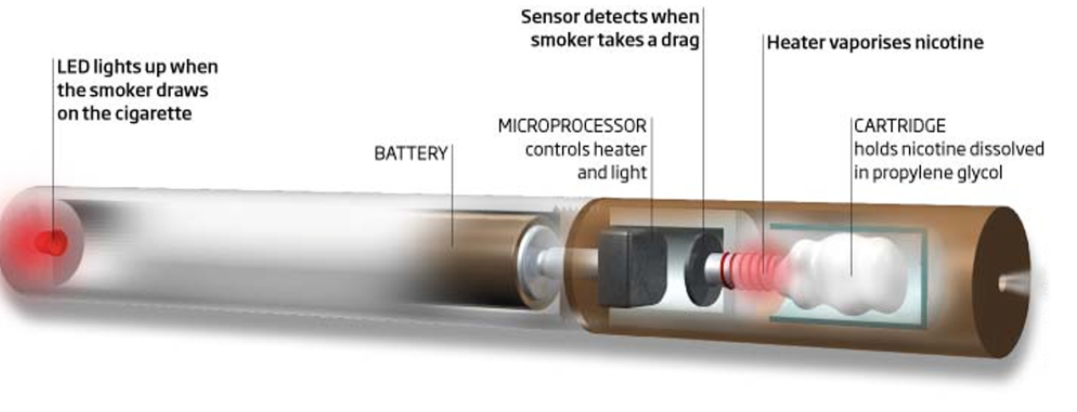
E-cigarettes
07 Nov 13 |
E-cigarettes are becoming increasingly popular in the UK as an alternative to tobacco smoking. Also known as ENDS (electronic nicotine delivery systems), they provide a means of inhaling nicotine vapour, potentially eliminating the need to use smoked tobacco.

First developed in China in 2004, e-cigarettes typically consist of a plastic or metal tube, a glowing light-emitting diode tip and the emission of vapour. They often (but not always) resemble cigarettes in size and appearance. The user puffs on the device as they might a cigarette, inhaling a vapour solution of nicotine in propylene glycol or glycerine.
At the moment there is limited evidence on the safety or efficacy of e-cigarettes and this is one of the reasons that a decision has been taken in the UK to regulate these products as medicines in a similar way to current Nicotine Replacement Therapy (NRT) products. This change will happen gradually and is intended to fit with EU legislation (the Tobacco Products Directive) which should come into effect in 2016.
In the meantime, recent surveys suggest that current use of e-cigarettes has more than doubled in the UK from 2.7% of smokers in 2010 to 6.7% in 2012. This equates to around 800,000 current e-cigarette users in the UK in 2012, and more recent data suggests that use has continued to rise since then. The vast majority of those using the products are current or recent ex-smokers who are buying them to help cut down or stop smoking. This fits with the growing body of evidence that the products may play a potentially useful role in tobacco harm reduction and in smoking cessation, and that they are safer than continuing to smoke.
However, there are a number of important concerns about e-cigarettes and, in particular, their advertising and promotion. Some of this advertising may appeal to young people who are current non-smokers, introducing them to nicotine use and potentially providing a gateway to smoking. Time and further research should provide much needed information about the place of these products in public health in the future.
Professor Linda Bauld, University of Stirling and UK Centre for Tobacco and Alcohol Studies
This article, by Professor Linda Bauld, was orginally published in the SCPN Newsletter Volume 4, Issue 4.
Read the full issue here: